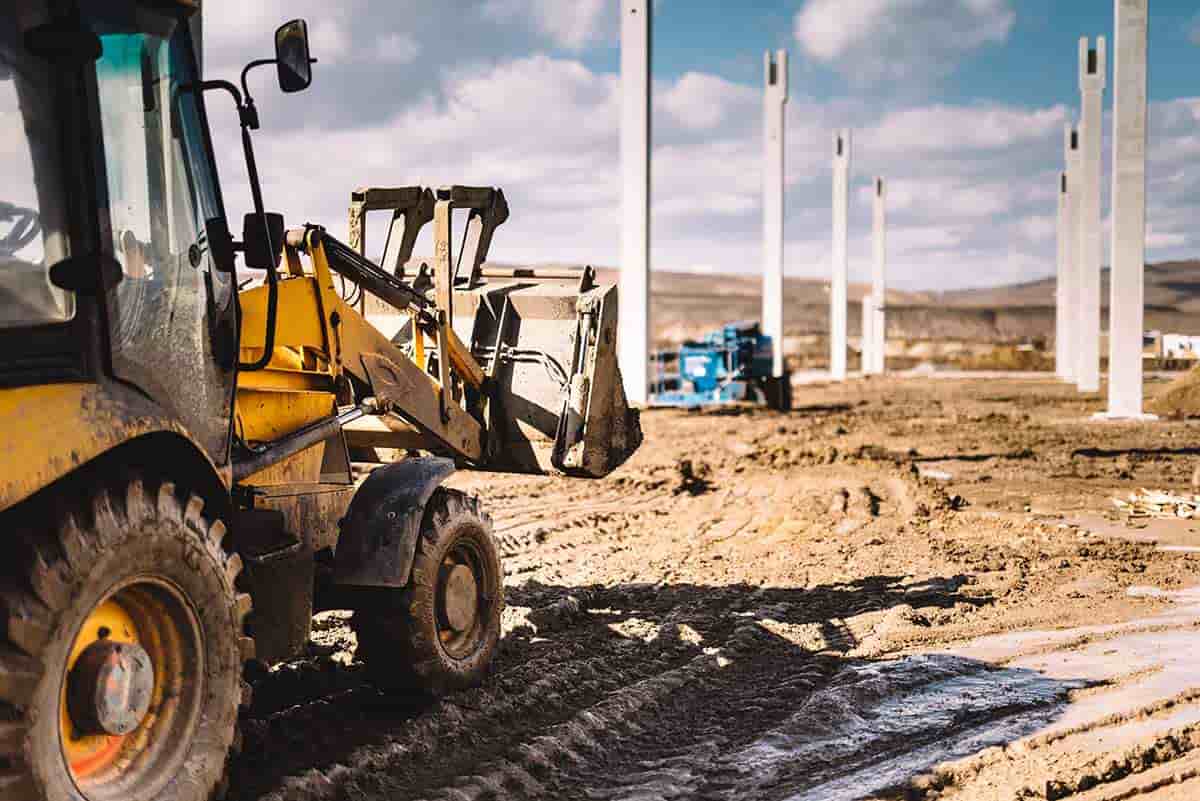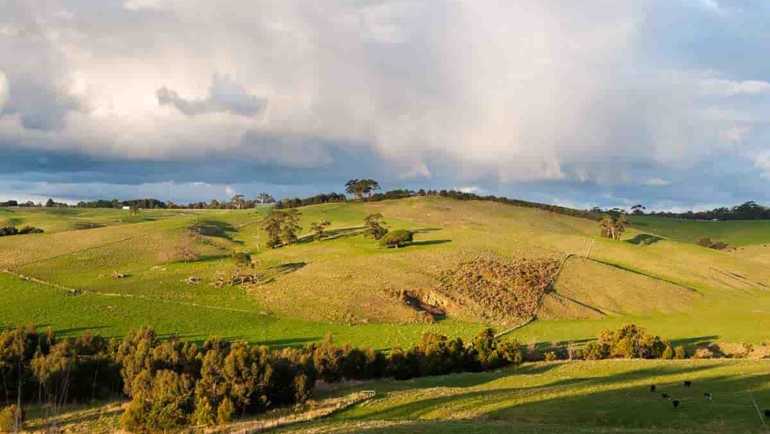When developing land, it is essential to identify if it’s appropriate for your business venture. In addition, you need to consider the benefits of developing land and how it will help you achieve your goals. For example, developing land might be beneficial because there are no competitors in that area or due to its proximity to a major road or highway.
The five most common steps to develop land are:
- Evaluate its economic feasibility.
- Find out what the land is zoned for.
- Secure your financing.
- Begin building within zoning laws.
- Market the land/property to sell.
Developing land will be an investment of time and money, so you need to ensure it’s worth devoting resources towards. If done correctly, developing land can offer numerous benefits that help increase profits in the long term. In this article, we discussed the most common steps to develop the land.
Table of Contents
What Is Developing Land?
Developing land is devoting time and money towards developing a piece of property. If done correctly, developing land can offer numerous benefits that help increase profits in the long term.
Land development is a complicated process that involves interpreting, planning, engineering, and constructing improvements on a plot of ground in accordance with municipal and regulatory rules.
There are different types of land development, including:
- Major Developments: Subdivisions of land with more than ten lots, rental or lease projects of more than ten lots/units, manufactured home developments whether rental or leased with over ten lots (also known as mobile home parks). Projects involving the creation or extension of any private road longer than 1800 feet and the construction of any new public roadway are all examples of major developments.
- Minor Developments: Single-family home subdivisions or rental/lease developments with fewer than ten lots/units, rental/lease manufactured home developments of 10 lots or fewer, and commercial, industrial, or office projects producing 1,000 to 5,000 average daily trips.
- Group Developments: Multi-family projects, such as apartment buildings with rental or lease units in several structures on a single plot of land, office complexes with multiple units in a single building, or on a common ownership and maintenance lot. Commercial developments, industrial parks are also considered group developments.
- Developments of Regional Significance: Development with a total volume of 5,000 or more average daily trips (ADT). Subdivisions, multi-family buildings, shopping malls and office complexes, industrial parks, and similar types of development are examples.
In addition to these four types of urban land development, land may be developed for agricultural or transportation uses. These forms of land development require additional tests like soil and environmental testing.
Is It Hard to Develop Land?
Developing land is a process that is complicated and time-consuming but can be rewarding in the end.
Developing land is a complex process involving many different professionals and one that comes with a high level of risk. As a result, land development can be very expensive and difficult to achieve.
In order for a development project to go ahead, there must be an extensive process of planning approval from the local council, and other statutory bodies.
Land development may require:
- Road construction
- Access roads, walkways, and parking lots
- Landscaping
- Service connections to municipal services and public utilities
- Drainage, canal system
Developing land can take anywhere from a few months to many years. In addition, the process involves permits and contractor hiring, which makes it even more complex. It requires road construction, permits, hiring contractors, and much more.
What Kind of Uses Can Land be After Developed?
Land that is being developed often already has an intended use. This use is based on community needs and the current condition of the land. Zoning laws and economic feasibility are also considered before developing land.
After the land is developed, it is divided into smaller plots for different uses. There are seven types of land uses categorized:
- Residential area
- Institutional area
- Industrial area
- Road greenbelt
- Roadside
- Park and forest.
Each categorization needs to meet specific zoning laws and environmental tests. For instance, farmland must undergo environmental tests for both water and soil as well as a sustainability and climate test.
The 5 Most Common Steps to Developing Land
A lot goes into developing land, but there are five main steps to achieve from purchase and evaluation to the sale of your developed land. Let’s explore the five most common steps to take when developing land.
Evaluate the Land's Economic Feasibility
The economic feasibility of the land is one of the most significant factors in determining whether to develop it. Essentially, a feasibility study is a predictive analysis of a new service or location that takes numerous variables into account, such as:
- Technical- Available Technology Resources
- Demographic- Consumer Habits
- Legal- Meets Legal and Ethical Requirements
- Competition- Business Cannibalization
For individuals considering starting a new project soon, market research studies can produce extremely vital data. For example, when developing land, an economic feasibility study will essentially tell you if the demand for your type of development exists and if the resources are present.
For example, if you plan to develop a residential area, it is essential to do an economic feasibility study to gather information on expected population growth in the region. You must determine whether the venture will be profitable and if the growth potential is sustainable.
Find Out What the Land Is Zoned for
Many different types of properties are available on the market, but not all may suit your needs. Identify what type of property is best suited for your project. The zoned property includes:
- Commercial
- Residential
- Agricultural (ex: dairy farms), etc.
Once you have a better idea of what type of property is available and what it’s zoned for, visit the local planning department. The planning department will be able to provide you with any information regarding environmental impact studies or legal issues that may affect your development project.
You can potentially save yourself from costly mistakes if this step is considered. It will identify legal issues or the project’s environmental impact. It would be wise to invest time in researching data before moving forward with your development project.
If you discover existing land that fulfills all your requirements but is zoned for a different use, you don’t have to give up hope. Instead, you should be able to rezone the property. You’d adjust the permitted use to accommodate your project needs because of this. This is an accepted method in real estate development.
You’ll need to meet with the local governing bodies and apply to rezone your land. You’ll have to work closely with the local planning commission to have permission to rezone.
Secure your Financing
When developing land, you’ll inevitably need financing. To secure your funds for land development, lenders will want to know a lot of information about the project. You’ll need to provide a detailed development plan which includes a market analysis and an estimated timeline. Hire professional help for these documents if you’re not comfortable drafting them yourself.
You’ll need to be able to answer a lot of questions, such as:
- How much money will you need?
- What is your development strategy?
- Are there any other factors that might affect the development process (ex: zoning)?
To secure your financials, you must have all documentation ready on hand from day one when offering any real estate development property or investment. To begin with, figure out which property development financing option is best suited to your situation.
A bridging loan is a type of loan that you take out after your existing mortgage has ended, allowing you to cover the difference between what you owe and the price of an alternate property. For example, if you want to borrow money to acquire a property for renting out, you’ll need a buy-to-let mortgage. On the other hand, if you wish to buy a new house but have not sold your current one or desire to acquire a home and restore it (paying the total amount of the loan plus interest when reselling), this might be an acceptable solution.
Typically, 70-80% of the construction cost is financed through property development financing. Bridging loans are used to bridge the gap until the loan can be paid back or longer-term finance is secured. Longer-term bridging finance or a commercial mortgage might be used to fund extensive renovations.
Begin Building Within Zoning Laws.
After funds are secure, the next step is to begin building within zoning laws. When you are ready to build within your development zone, several steps are involved for this process to go smoothly. To ensure your building process goes smoothly, follow these steps.
- Hire a Site Planner to Help You with the Zoning Laws of Your New Development
- The first step is hiring a site planner to help you understand your zoning laws and how they apply to your new development.
- Most cities have different boards for differing types of developments (i.e., commercial, industrial), so you must ensure all regulations are met before construction begins or continues on any given project under review by this board.
- Make Sure You Have Permits for Your New Development
- The next step is to make sure you have the necessary permits in place. Once the board has approved your development project, they will issue a permit that states whether or not additional approvals are required at any given stage of construction.
- This can include demolition and grading before the building begins to road access during testing phases when electricity might still be off onsite.
- Find the Right Contractor for Your Project
- After zoning laws are met and permits are issued with all associated conditions included under each permit, it’s time to find the right contractor who specializes in commercial developments.
- There is no single perfect developer out there because every development is different. Some developers are better suited to certain projects, while others excel at working with older buildings that need major renovations.
- Specify What You Want in Your Contractor Agreement
- When developing land, the contract between a developer and owner is significant since it details exactly what’s expected from both sides. The agreement should be specific enough so that there aren’t any misunderstandings along the way about timelines or budget limits.
This is the most complicated step, as it requires a lot of planning and working with planners to ensure that all concerned authorities will approve any addition or restructure.
Market the Land/Property to Sell
Once the building has finished, you’ll need to market the developed property to sell. To properly market your land or property to sell, you’ll need to create a marketing plan and, with it, an effective sales strategy.
Pay attention to who you think your ideal customer will be and try to find them. Make business owners and existing companies your target audience if the site is zoned for commercial enterprises.
When selling real estate, comparing comps is difficult since land sales are less common than home sales. You’re unlikely to discover an area with comparable size and characteristics that have just sold nearby and recently.
Conclusion
An excellent way to develop land is by putting together a business plan and consulting with experts in the field. The more you know about development, the better your chances of success will be. Developing land is a complex process. Numerous factors must be considered before taking on a land development project.
Developing land can help your company thrive if done correctly! It’s essential to understand how developing property works so that you can develop it successfully for commercial purposes. You need to make sure developing land is the right choice for your business venture.




